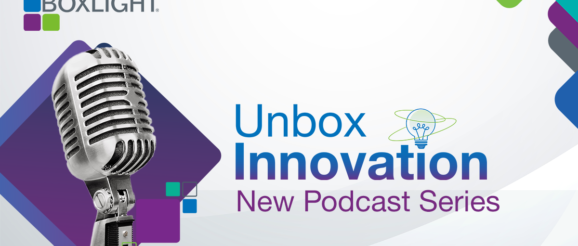Unbox Innovation: Cultivating Creativity in the Classroom, Part 1

In the first official episode of Unbox Innovation, Boxlight’s newest podcast series, Host Gabrielle Bejarano had a chat with Preston Trebas, STEM Training and Development Specialist, to discuss the challenges teachers face in today’s educational landscape, with a special focus on fostering creativity in the classroom.
The Core Challenge: Time and Pressure
Preston emphasized that time is at the core of the challenges teachers face. The pressures on teachers, from administrators, parents, and the community, can unintentionally stifle creativity in the classroom.
“When I look at the challenges that I faced in talking to educators, the thing that comes up often is time,” he commented. “When you look at the word ‘time’ and you look at the things that surround time, you can see the pressures that are put on teachers from administrators, from parents, from (the) community…”
Preston feels that the pressure to excel and perform, driven by a desire for excellence, often results in an overemphasis on standardized testing and curriculum requirements, taking away from the true essence of education.
Fostering Creativity: A Human Birthright
Preston stresses that creativity is an inherent human ability that can and should be nurtured. He said, “We are all born with the ability to be creative. We are all born with the potential to be creative.” He strongly believes that schools should focus on nurturing this skill rather than stifling it, commenting, “There is a hunger for creativity that children are looking for ways to express themselves. They’re looking for an outlet…it is our role as educator…to guide them through this process.”
Balancing Curriculum and Creativity
Preston suggests two practical approaches to fostering creativity in the classroom. The first involves allowing students to explore their passions through passion projects. By providing students with the opportunity to choose topics they’re genuinely interested in, educators can create a more engaging learning environment. The second approach introduces the idea of a choice board. This structured method allows students to choose from a range of options on how they want to demonstrate their understanding of a concept, fostering a sense of ownership in their learning.
A Precipice of Creative Change
The conversation highlights the critical juncture in education where there is opportunity to reevaluate what truly matters. Educators who embrace change and prioritize students’ interests often find that test scores and learning outcomes improve. This is the time to empower students to take responsibility for their learning and lead their educational journey.
Watch the full podcast:
This podcast discussion provides valuable insights into how educators can foster creativity in the classroom, empower students, and create a more engaging and effective learning environment. Part 2 of this insightful conversation with Preston Trebas will be coming soon.
